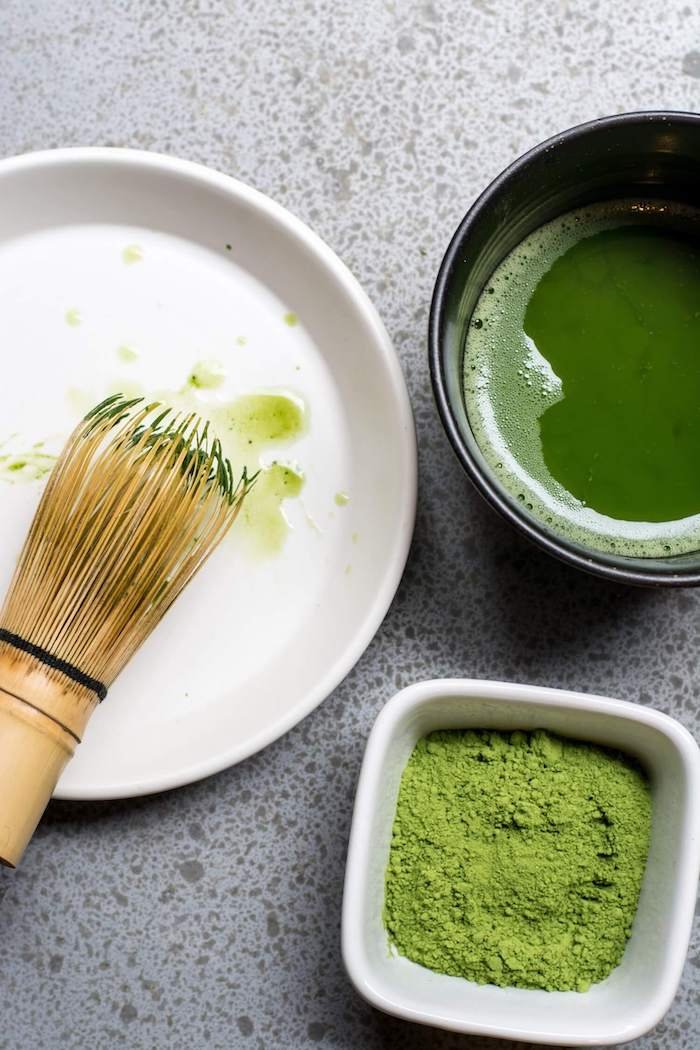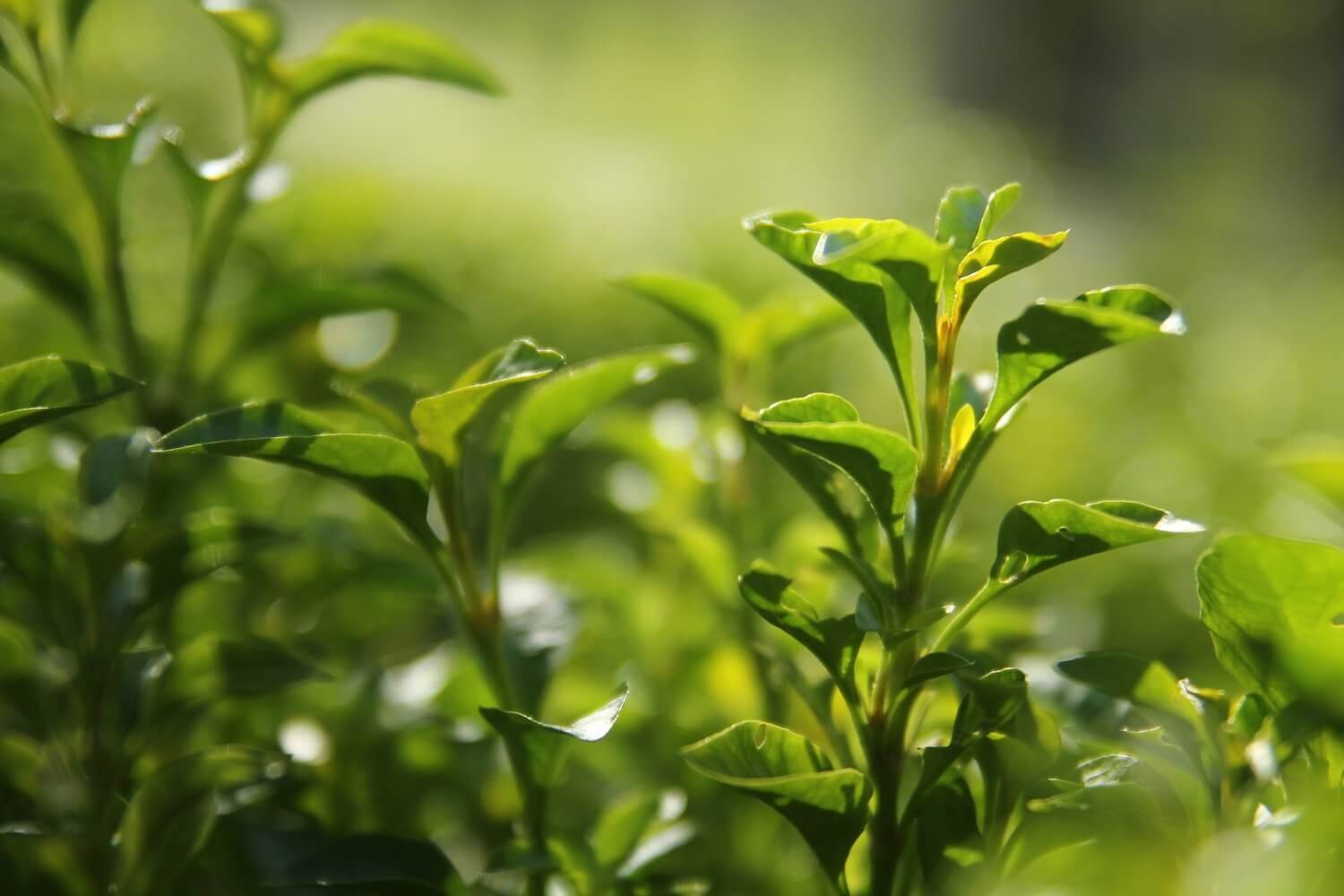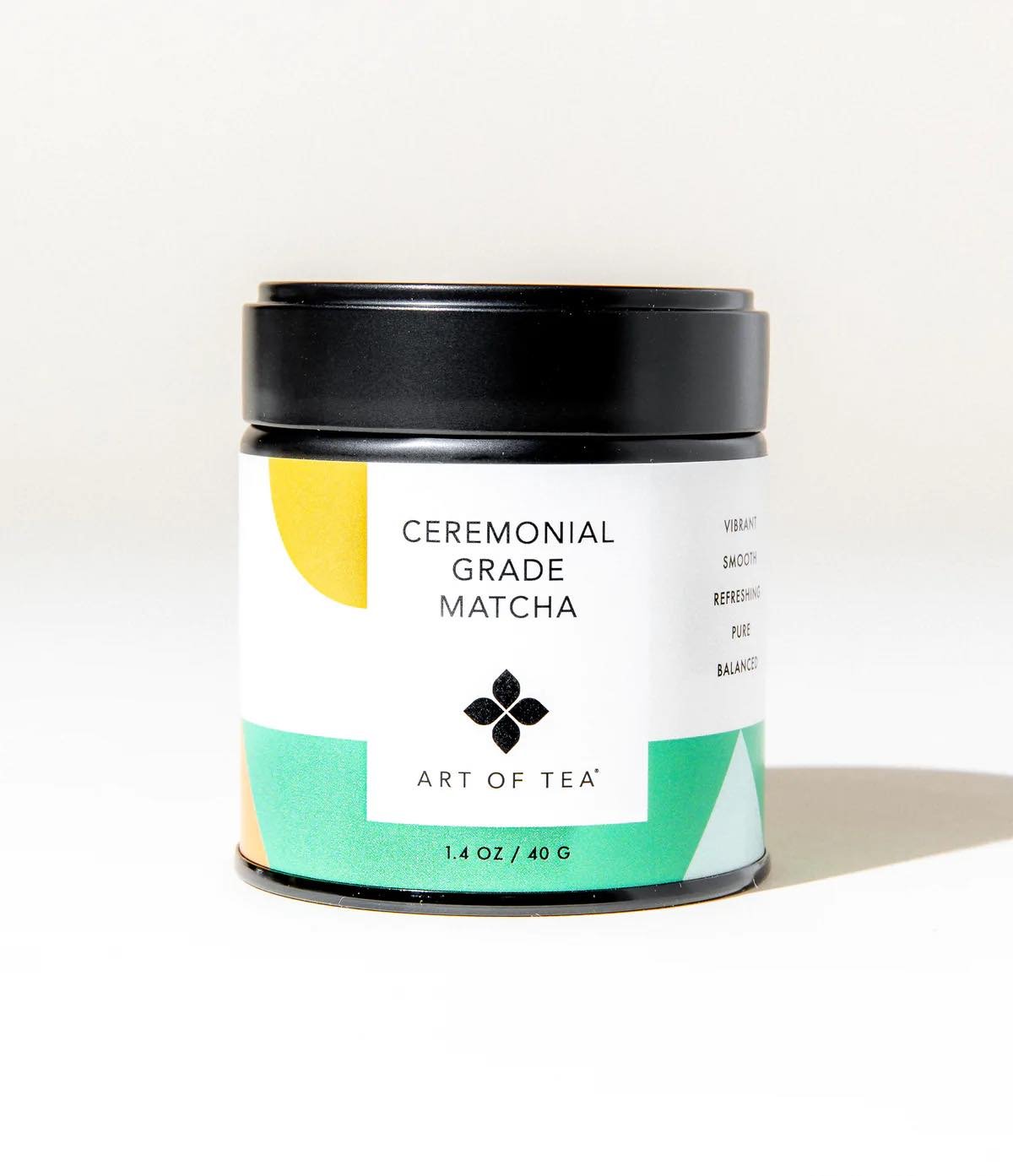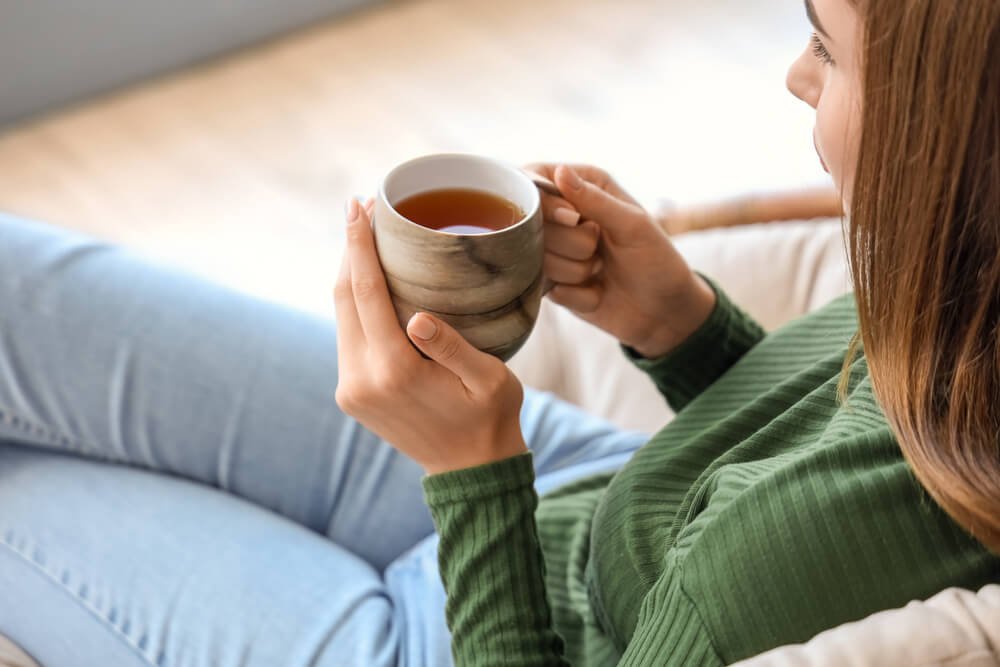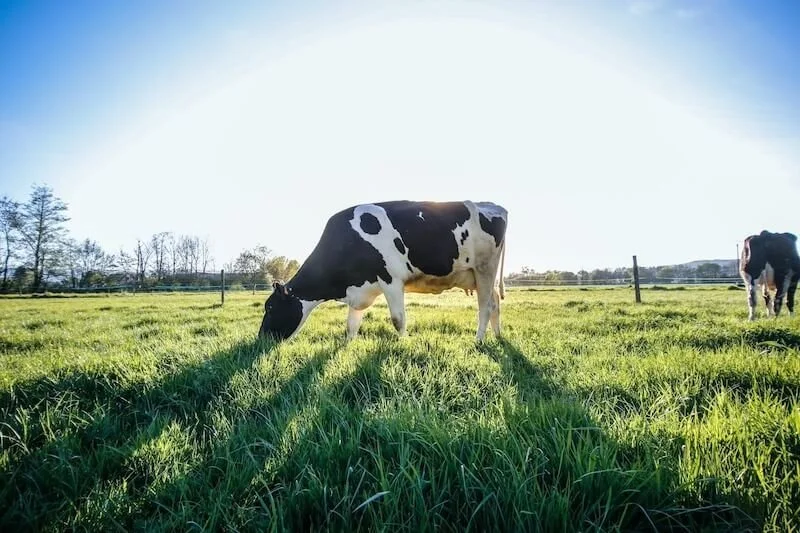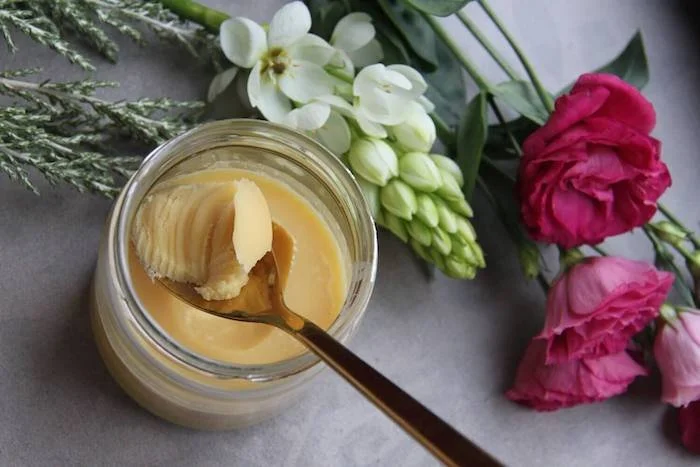The Best Organic Matcha Brands
Many morning rituals start with a hot beverage. This is often coffee; but what if you’re not a coffee-lover, yet still looking for a hot drink to kick start your day?
Matcha may be the answer.
What is Matcha?
A form of green tea, matcha is made by taking whole leaves from the tea plant Camellia sinensis and grinding them into a powder.
The leaves grown for matcha production are covered with shade cloths, thus increasing the chlorophyll content, making them bright green, and boosting their amino acid content.
Now softer and sweeter, the tea leaves are harvested, steamed, and dried. Stems and veins are removed and the dried leaves ground into a powder.
This process means whole leaves are used, whereas with regular green tea, hot water is infused with leaves which are then discarded.
Be aware, however, that depending on how well you mix your matcha, you may find little bits of matcha powder at the bottom of your cup.
There is no harm in consuming it, but the unique flavor may be a bit stronger at the end!
What does Matcha taste like?
Matcha has a strong, grassy flavor profile and is predominantly served as a hot drink.
Its most common use is matcha tea made with hot water, but it can also be served as a latte by adding milk as strong matcha can have a slightly bitter taste.
It has been incorporated into baking too, inspiring foodies to whip up scrumptious treats like matcha pancakes, brownies, muffins, ice cream and fudge.
Historical and Cultural Origins of Matcha
Matcha’s origins start in China, where the history of the tea ceremony is rooted. Buddhist monks used tea as a stimulant to combat drowsiness during meditation and by the time the Tang Dynasty (618 to 907 AD), it had become a popular drink.
During the 9th century, at a time of great cultural exchange, Japanese monks sent envoys to China who returned not only with fresh knowledge of Buddhism but with tea seeds as well, planting and cultivating them around their temples for the production of green tea.
One of the first places this happened was in Uji and to this day it remains the source of some of the world’s best matcha.
Green tea and its use in ritual and ceremony were further pioneered in Japan during the 12th century when the Buddhist monk Eisai returned from a trip to China with tea seeds and a method to make matcha, extolling its virtues and even writing a book dedicated to the topic entitled Kissa yōjōki (Drinking Tea for Your Health).
Matcha’s popularity soon expanded. While it started being forgotten in China, it flourished in Japan, becoming a distinct ritual and ceremony known as chado.
It formed part of monks’ meditation practices, helping them focus and maintain energy, and was introduced to the samurai who made drinking it part of their pre-battle rituals with ceremonial matcha powder.
Although this ritual use of matcha continued to be popular in Japanese society, it was only available in small quantities from small batches that had to be made by approved merchants.
This made it a luxury item, reserving its use for the elite. But by the 18thcentury, more efficient production methods made it available to the general population and today Japanese matcha and its popularity has increased further, spreading across the globe and into Western culture.
Its contemporary popularity is in part due to its traditional association with meditation, the practice of which has become popular in Western society.
What are the Health Benefits of Matcha?
Matcha has many potential health benefits. It is rich in antioxidants such as polyphenols – which have been linked to protection against heart disease, blood pressure reduction, and better blood sugar regulation – and EGCG (epigallocatechin gallate), believed to have cancer-fighting properties.
It also contains l-theanine, an amino acid that may improve cognitive function and reduce stress.
High-quality matcha made from organically grown and processed green tea leaves has the added benefit of limiting or eliminating the use of pesticides and synthetic fertilizers, making it a safer working environment for farm laborers (who usually handpick the leaves) and a safer end-product for consumers.
The downside to matcha is that the leaves may contain lead, which could end up in the powder of lower quality brands.
However, these are usually trace amounts and quality brands have less of a chance of having lead.
And while it has less caffeine than black tea or coffee, it’s best not to have a cup before bed.
Rather make matcha part of your morning routine or drink it as an afternoon pickup.
Environmental Impact of Organic Matcha
The environmental benefits of matcha can start with the tea ritual itself because its purpose is to evoke self awareness, generosity, and respect nature.
On a practical level, matcha comes in the form of a powder, which means there is no tea bag waste and, since the whole leaf is used, no part is wasted.
Of course, anything we consume has an environmental footprint and matcha is not without its cons.
To grow and cultivate the tea bushes, a lot of land is required. When land is cleared and replaced with monoculture crops, it leads to biodiversity loss and increased carbon emissions from logging
Monocultures provide ideal conditions for pests, which means pesticides are needed, posing a risk to workers, consumers, and the environment when toxic chemicals leach into the air, water, and soil, as well as the plants.
To lessen the environmental impact, search for high quality organic matcha.
Organic practices and organic products can waylay some of the above effects because organic farming reduces or eliminates the use of pesticides, as well as chemical fertilizers.
The organic prerogative is also to incorporate sustainable farming methods like polyculture and crop rotation.
Camellia sinensis is a resilient plant that is easily maintained, and the growth of the tea leaves and production of matcha – when compared with coffee – uses less water and leaves a smaller carbon footprint.
Your cup of matcha (and even of coffee, for that matter) can be made more eco-friendly when you leave out milk because both dairy and plant-based milk have their own environmental ramifications.
So consider saving those matcha lattes for a once-in-a-while treat.
What are the Different Types of Matcha?
There are two main grades to Matcha tea: Ceremonial grade matcha and Culinary grade matcha.
Ceremonial Grade Matcha
Ceremonial grade is used for drinking. It is meant for tea ceremonies but can be consumed outside of them.
It's the highest quality tea grade, produced from the youngest tea leaves. The stem and vein of each leaf is removed before grinding up the tea leaf into the finest powder.
The leaves and process used are what help give the matcha its famous vibrant green color, as well as making it naturally sweet and super fine in texture.
This ceremonial tea grade is never gritty, and this tea is so high quality it has been used for centuries as part of traditional Japanese tea ceremonies.
Japanese tea ceremonies have a deep, rich history and are an important part of Japanese culture to this day.
Culinary Grade Matcha
Culinary grade matcha is still high quality matcha, but its purpose is for cooking and baking.
This tea grade is strong and has a slightly bitter taste, intended to pair with other ingredients.
You can drink culinary grade tea, but because of its slightly more astringent flavor, it mixes well with smoothies and milk drinks like lattes.
Culinary matcha is food grade and often a lower price. It will still have the classic scent of fresh grass and be soft and fine, but the color will be slightly less bright green.
Culinary grade matcha has a higher antioxidant level than ceremonial grade due to the leaves used, and so you are still consuming high quality, beneficial matcha tea with this grade.
5 Organic Matcha Brands to Try
If you're searching for the best matcha powder, matcha lovers search no further. The best way to find the highest grade of match is to look for higher quality options.
There are many labels for matcha powder, including "latte grade" "ceremonial grade matcha powder, or "culinary grade matcha powder," but the best place to buy matcha or any type of green tea is a true tea shop where you can learn a bit more about the type of match you're purchasing.
If you don't have a tea shop nearby, these 5 organic matcha powders are my top pick for high quality matcha at a reasonable price!
This post does contain affiliate links. The Honest Consumer will receive a commission if you decide to make a purchase. Our commission is at no additional cost to you.
Art of Tea’s Variety of Organic Grade a Matcha
An importer and wholesaler of teas, Art of Tea offers a variety of organic teas and botanicals.
These include options such as green and black teas, blooming tea, herbal tea, and yerba mate. Along with their organic Grade A matcha powder, Art of Tea offers matcha cocoa and matcha gift sets.
The latter is a blend of Grade A matcha and unsweetened cocoa powder from the Guittard Chocolate Company.
For the avid tea fan, there’s paraphernalia available to help you prepare the perfect cup of matcha, like the traditional matcha whisk made from bamboo.
This whisk is usually used in a ceremonial matcha bowl, so if you want a fuller experience you can purchase Art of Tea’s matcha kit which contains a whisk, a handblown double-walled glass bowl, a matcha measuring spoon also made from bamboo, and a black matcha whisk holder.
Art of Tea’s matcha can be purchased for $32-$63.
Encha Matcha: USDA Certified Organic
Founded in 2014, Encha specializes in high-quality, organically-farmed matcha sourced from their farm in the hills of Uji, Japan.
They have three grades of matcha. Ceremonial-grade Encha is ideal for ceremonial tea drinking and latte-grade Encha can be served with milk for a delicious, smooth latte.
Culinary-grade Encha is ideal for cooking and baking, but the other two grades can be used too.
Encha’s matcha powders are 100% USDA-certified organic and are tested for heavy metals, including lead.
They also offer matcha kits consisting of an electric matcha whisk, matcha scoop, and ceremonial-grade premium matcha green tea powder.
If you want to follow more traditional rituals you can purchase the Organic Matcha Ceremony Kit containing ceremonial-grade matcha powder, a matcha bowl, a natural bamboo whisk, a whisk holder, a bamboo scoop, and a sieve (known as a chakoshi).
Encha’s matcha powders can be purchased for $17-$30.
My Tea Drops Organic Fair Trade Matcha
Whether it’s black tea or herbal tea, morning or evening tea, or a tea for detoxing, My Tea Drops has a wide variety on offer to suit every taste and purpose.
Their whole-leaf teas come in the form of drops, hence the name, and are bag-free.
Made in the USA, My Tea Drops is certified USDA Organic, vegan, gluten-free, and Fair Trade certified.
Their matcha is available in sweetened, unsweetened, and strawberry-flavored drops.
My Tea Drops also offers matcha kits with all the right ingredients to whip up a delicious matcha latte or a fun boba matcha, including a touch of condensed milk for a sweet kick.
My Tea Drops matcha can be purchase for $15-$22.
Pique’s Organic Tea Crystals
Pique seeks to promote health and wellness through their range of green, black, and herbal crystal teas.
The crystals are created by sourcing organic loose-leaf tea leaves that are cold brewed and then pressured and dehydrated, resulting in their tea crystals.
This process preserves up to 12 times the nutrient content compared to other teas.
Pique’s Sun Goddess Matcha is organic, ceremonial-grade, and quadruple toxin screened; and it is vegan, non-GMO, and gluten-free.
Pique matcha is available in a box or tin, or you can treat yourself to the Matcha Beauty Bundle which currently includes their Sun Goddess Matcha, a coffee detox book, handheld frother, and Pique glass beaker.
Pique’s matcha can be purchased from $48-$60.
Soar Organics Specialty Organic Matcha
Specializing in matcha and hojicha tea, Soar Organics sources certified organic matcha directly from Japan.
Their organic ceremonial matcha is sourced from Kirishima and Uji and they also offer everyday and culinary matcha.
The 120-prong bamboo whisk is perfect for whipping up a cup of matcha, which you can serve in one of their beautiful handmade mugs.
Orders are packed in recyclable boxes with a non-toxic, biodegradable filler.
They’ve furthered their eco-friendly aims by becoming a member of 1% for the Planet, donating a minimum of 1% of their sales revenue to the organization.
Hopefully this guide has helped you learn about some organic and sustainable matcha brands worth adding to your morning routine!
For more tips & tricks on sustainable living be sure to follow The Honest Consumer on social media, subscribe to our newsletter, & check out the Ethical & Sustainable Brand Directory.

